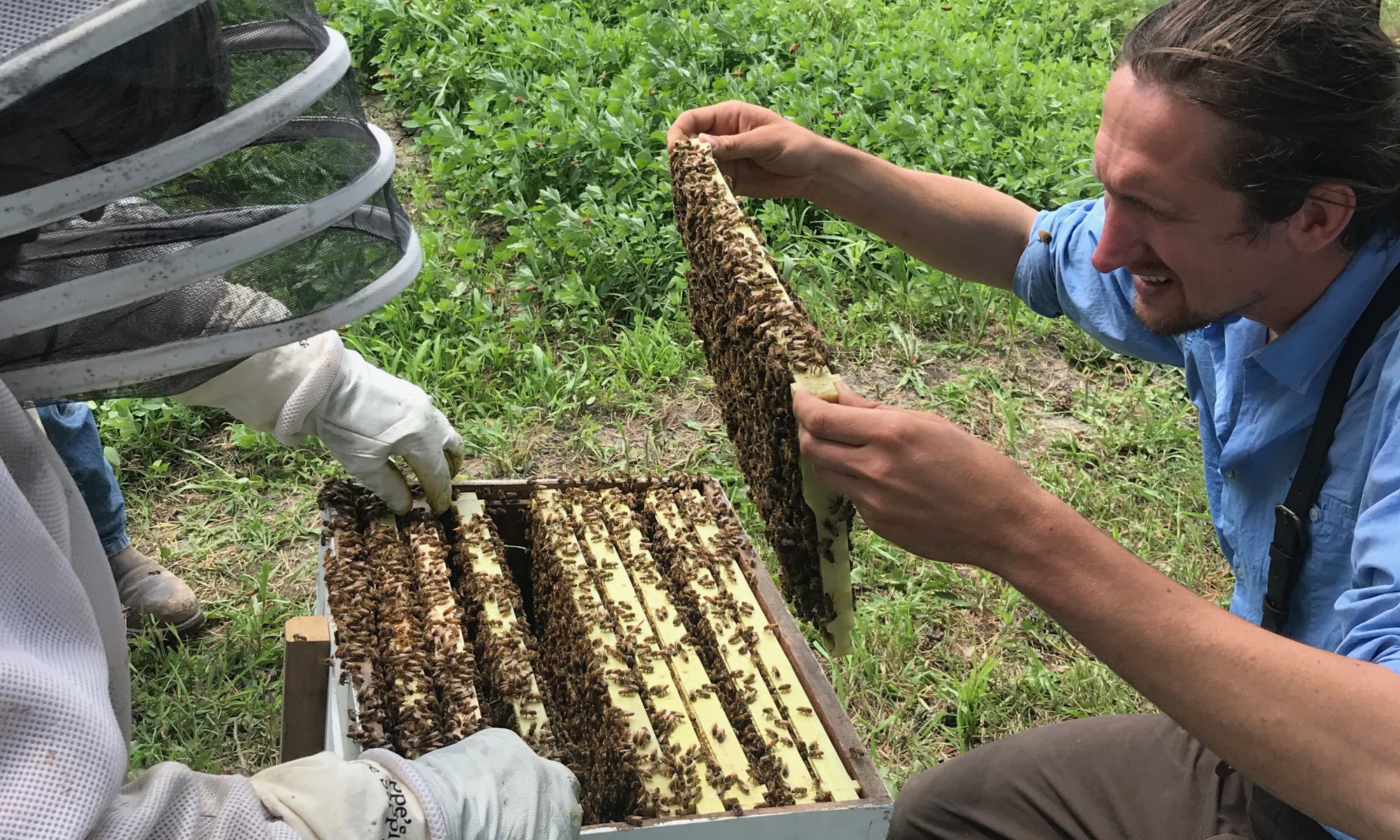It is my intention to keep bees in a way that fosters resilience in local, feral populations, and to do so without using pesticides. To never over-harvest their yearly honey crop… to let the bees be bees.
Look into treatment-free beekeeping for more information.
It was 2018 and I was living in Prairie du Chien, Wisconsin on a shanty boat on the Mississippi River. On my saunters around town I started seeing what I knew as beekeeping equipment outside a local’s house. Hand painted signs displaying prices showed up. My curiosity got the better of me and I met Louis.
I was bartending at the time, nursing a back injury, and money was tight. Good thing living on a boat can be free.
In classic fashion, knowing nothing about beekeeping, I put together my bartending tips and bought him out of his equipment. Standard Langstroth boxes, deep plastic frames with foundation, some drawn comb and honey. Along with the hives came a living colony of Italians. I was a beekeeper!
Louis introduced me to the basics, gave me a hive tool, and sent me with his prized smoker, a relict from the beekeeper that encouraged him to keep. Having studied biology and been part of insect research for the last 8 years I was confident I could make it work.

From day one I was told about the yearly rituals of treating hives with pesticides to manage varroa mites (Varroa destructor), a common killer of commercially produced bees. I informed Louie that I wasn’t interested in using pesticides in my hive. He was kind and understanding, even encouraging. Looking back I’m lucky to have been greeted with that response, as with anything, opposing views can create conflict.
That season I moved back to Iowa, purchased a Russian Queen from Foleys Russian Bees out of Indianola, IA, and performed my first split. I was hooked.

That first winter the Italians ran out of honey stores and the colony died, but the Russians came through strong (even with the -60 degree polar vortex) and swarmed in early spring. Luckily they moved into abandoned equipment on site. I started reading a bit about beekeeping online, but mostly reached out to several of my beekeeping mentors, including Eric Kenoyer of Kenoyer Farms for advice.
That first full season I went from one to ten colonies by making splits, catching swarms, and doing cut-outs from buildings. Ive learned a lot, and my own style of beekeeping has started to form from methods that align with my personal values and interests.
To me beekeeping has become less about doing anything I can do to keep the bees alive, and more about interacting with an amazing colonial organism. I don’t fret about hives surviving the winter, about things that are outside of my control. Beekeeping is supposed to be fun.
I do not want bees in my apiary that can not take care of their own disease, and that can’t store enough honey for themselves to get through winter. They are genetic dead ends.
Overview of style:
- Treatment-free (pesticide free)
- Russian/feral/survivor stock/VSH
- Expansion model beekeeping
- 5 and 7 frame Langstroth equipment
- Top entrances
- Foundationless frames (with foundation starter strips)
- Deep brood boxes
- No feeding sugar
- Only harvest excess honey, leave enough for them to get through the winter
- Do it cheap! Don’t buy bees if you can help it. Buy local, overwintered stock from treatment free producers if you have to. Build equipment or re-purpose old stuff.
- Raise queens from survivor stock
- Re-queen colonies with high mite loads
- Have fun



Great laying pattern
Links
tps://horizontalhive.com/
https://tfb.podbean.com/
http://www.bushfarms.com/bees.htm
https://parkerbees.com/
https://kirkwebster.com/

